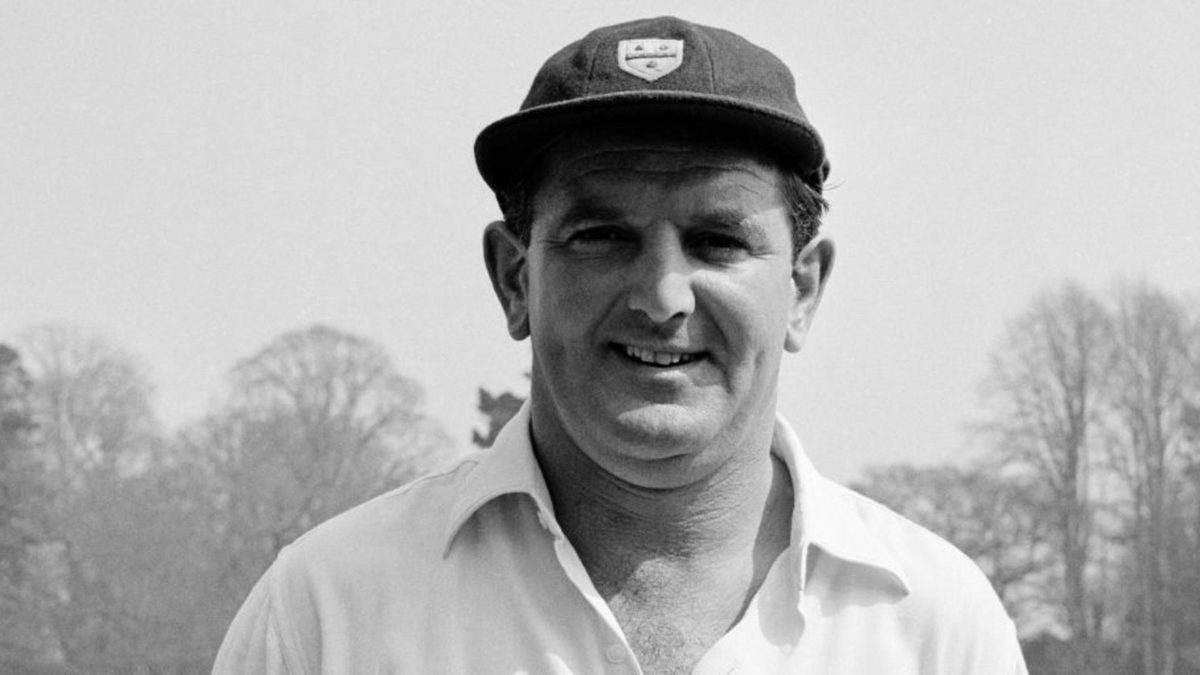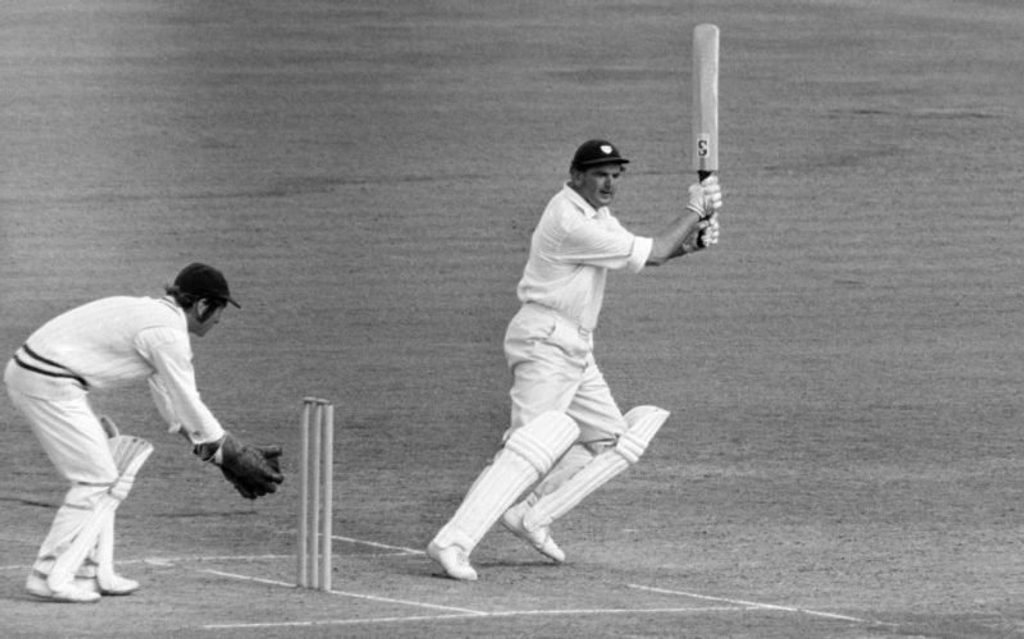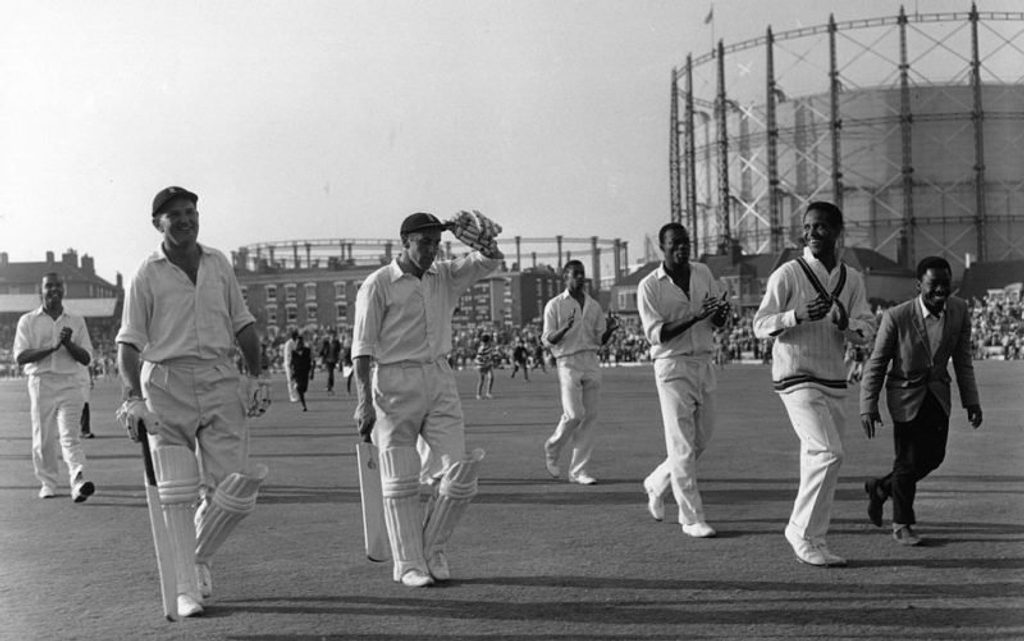
From his earliest days, it was clear that Tom Graveney was a major talent. After he passed 2,000 runs for the second time in 1952, he was named a Wisden Cricketer of the Year.
Tom Graveney became one of the most prolific and stylish English batsmen. He scored 47,793 runs at 44.91 with 122 centuries.
In the majority a county’s strength suffers serious depletion up on the retirement of a great batsman. Fortunate indeed are those clubs able to call upon successors of equal, or even higher, merit. What wealth, for instance, belonged to Yorkshire when Hutton followed his guide and champion, Sutcliffe, as an opening batsman of sufficient quality to become England’s regular choice. Middlesex were similarly blessed in the Hendren-Denis Compton sequence. In each case the junior instantaneously stepped into and wore with even more distinction the shoes of his predecessor.
Splendid as have been his feats, Thomas William Graveney has not yet fully compensated Gloucestershire for the loss of WR Hammond, but that he should be likened so frequently to such a master is testimony enough of Graveney’s exceptional skill. Undoubtedly, no brighter star has appeared in the Gloucestershire cricket firmament since the early days of Hammond himself; some who have played with both believe that with a comparable intensity, almost ruthlessness, Graveney in time could emulate Hammond’s remarkable achievements.
To stress this would offer no service to Graveney who, in any case, cares little for records; it does offer a measure of the estimates of his fellow-craftsmen. A point to remember is that, in common with many of his age, Graveney entered the county game without serving an apprenticeship, so that even when he became an England player, he was only emerging from infancy as a first-class cricketer. In view of such comparatively limited experience as that derived from five season and one tour, Graveney at the end of 1952 still could not be regarded as fully matured in the cricket sense, but, granted normal development and good health, he looked to have no more than sampled the honours which might be his.
From as early as he can recall, ball games figured prominently in Graveney’s life. With the example of a father devoted to all sport, the five children of whom Tom was the middle of three sons, required little else to excite their interest. Among other things, father encouraged the boys to begin golf at five. Tom was born at Riding Mill, Northumberland, and was only six when his father died. There the boys attended the Grammar School. Kenneth, the eldest, and Tom played together in the school team for several seasons, during which Kenneth did best as a batsman and Tom as a bowler.
In their subsequent association with Gloucestershire the roles were reversed, but the schoolboy Tom was a good enough medium-pace bowler to take nine wickets for five runs against Weston County School. Like Hammond, he was gifted with a flair for a ball which enabled him to excel at any sport attracting him. He played rugby for Bristol Schools and was regarded as an excellent hockey player. In addition, he showed himself an expert at most indoor games and every year his golf handicap went down.
 Tom Graveney is one of the few batsmen to have scored over a hundred first-class tons – he had 122
Tom Graveney is one of the few batsmen to have scored over a hundred first-class tons – he had 122
Plans were made for Graveney to enter accountancy, but on leaving school he volunteered for the Army immediately instead of waiting six months for his call-up. While serving in Greece and Egypt, where he rose to the rank of captain, he played much cricket on matting, and on coming home in 1947 was introduced to Gloucestershire by Ken, who joined the staff a year earlier. Kenneth’s recommendation was: “This is my younger brother. I can’t get a ball past him.”
Gloucestershire gave Tom a match in a charity match, where at once they realised his unusual merit. Before he accepted their offer of an engagement Graveney had to decide to abandon accountancy. He also turned down an opportunity of becoming a golf professional.
 Tom Graveney and John Murray applauded off the field by a Garry Sobers-led West Indies side in 1966
Tom Graveney and John Murray applauded off the field by a Garry Sobers-led West Indies side in 1966
Graveney began with Gloucestershire in 1948. He scored 973 runs and hit one century. Next year his aggregate rose to 1,714 runs and he was selected for the Players. In 1950 he made 1,892 runs and hit his first double century. He was not satisfied. Accordingly, when in the spring of 1951 the county coach advised him to abandon golf temporarily to tighten his back-play, he resisted all temptation to play the game at which he was once Henbury club champion, handicap one.
In this period of abstinence Graveney played in the Manchester Test against South Africa, and batted so well on a truly awkward pitch that he nailed the suggestion of weakness against a turning ball. That season Graveney exceeded 2,000 for the first time and hit eight centuries. In the winter he was the biggest success of the MCC tour in India and Pakistan, easily heading the averages and scoring six centuries, twice as many as any colleague. On returning to England, he again passed 2,000 aggregate and played in all four Tests against India.
Graveney, who is six feet tall and of light build, delights in driving. He holds the bat high and has the pronounced back swing of all who favour such a game. When in form he enjoys himself so obviously that the spectators quickly catch his mood. As an outfielder, Graveney has made much improvement on his early days when he disappointed by his slowness of the mark. Another link in the cricket chain was forged when Graveney married Miss Jacqueline Brookman in August 1952. His father-in-law, at 78, was still an active member of the Bristol Schoolmasters’ team.








